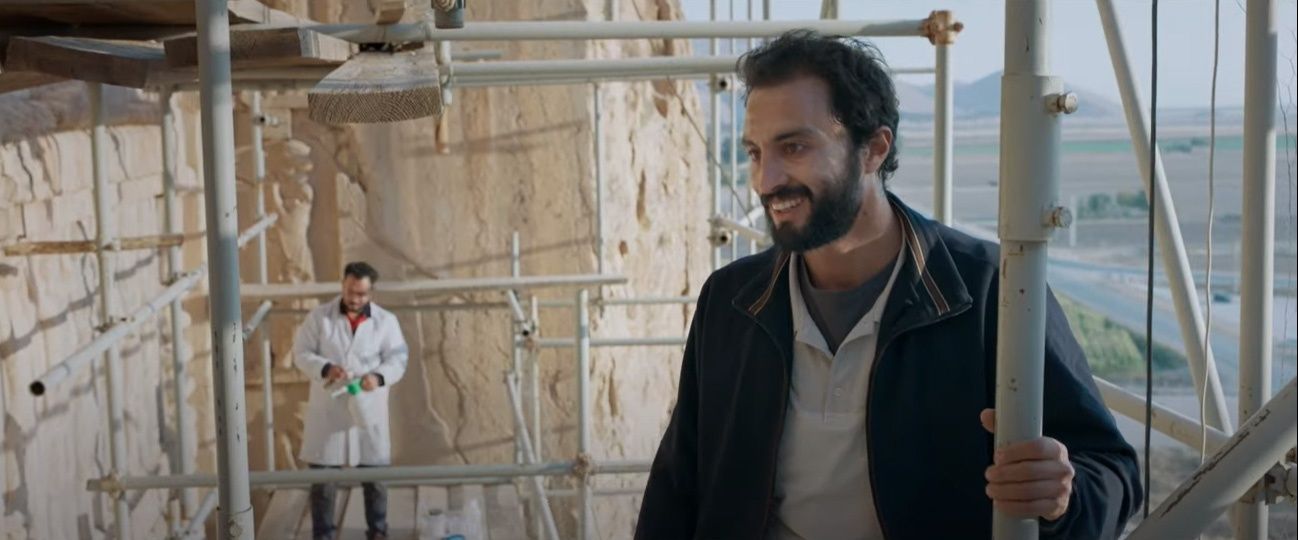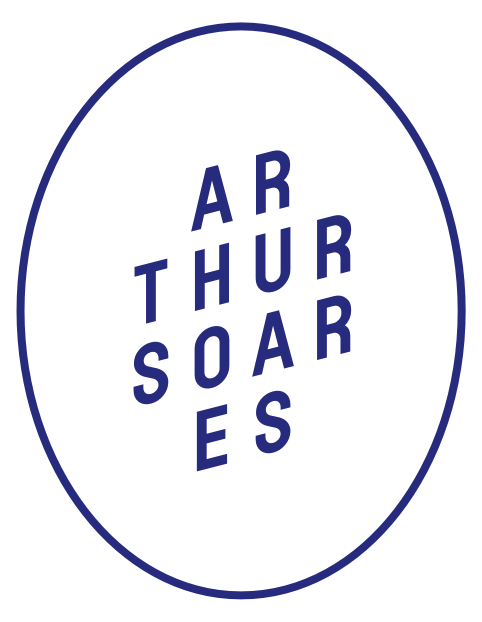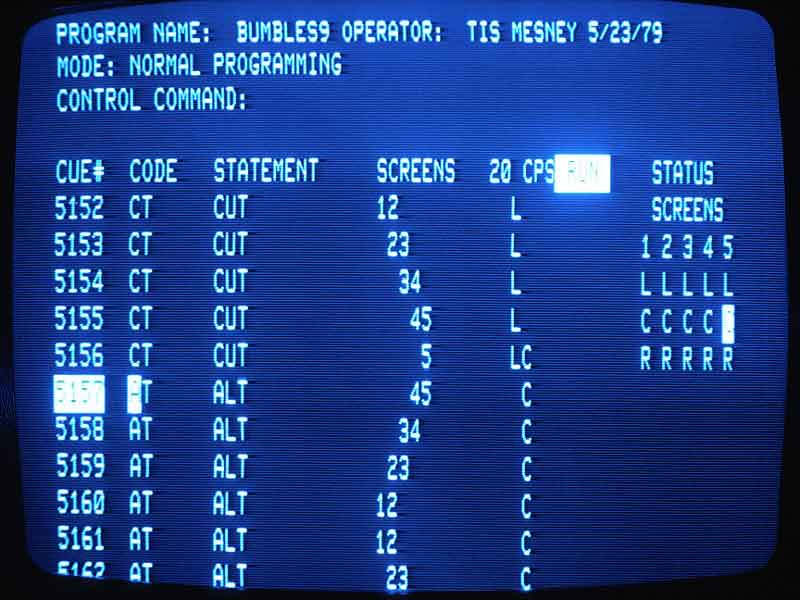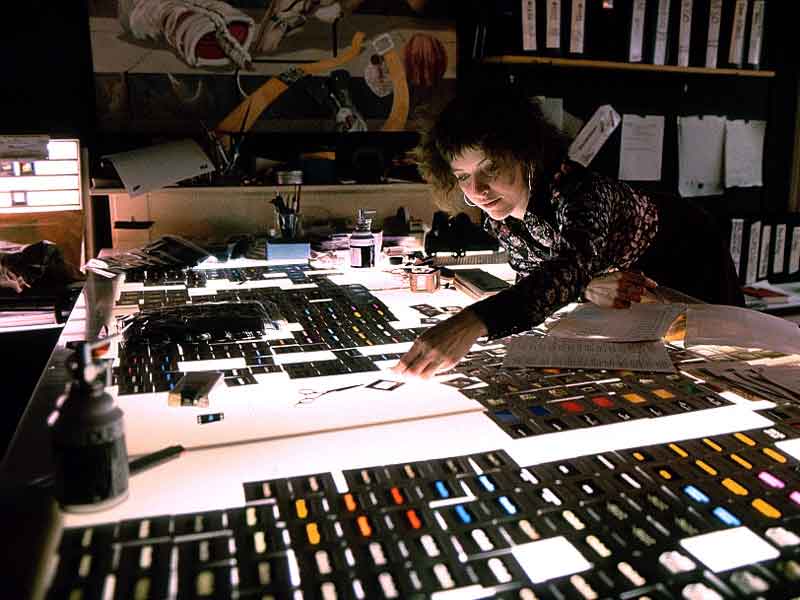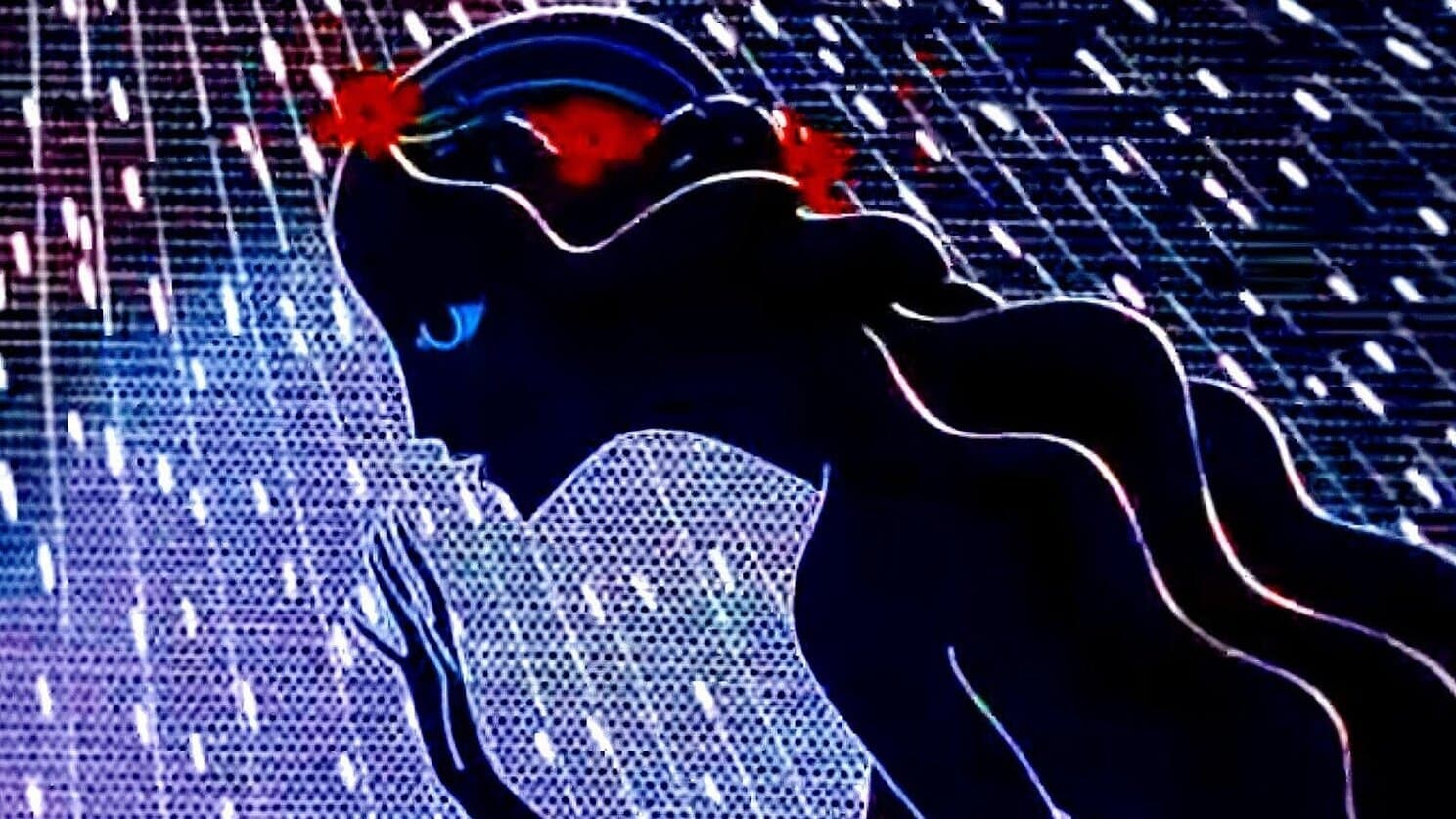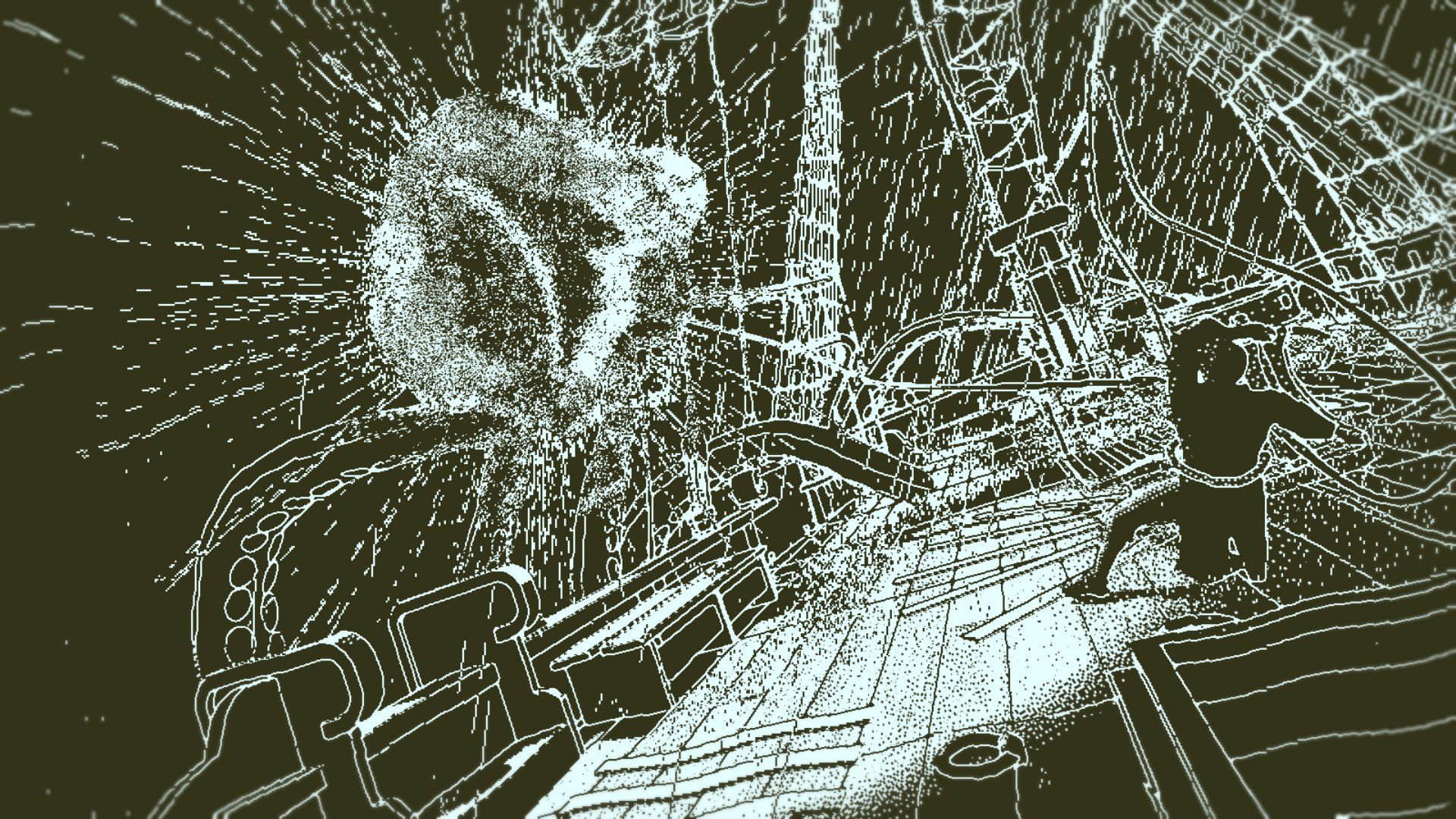I've procrastinated on an update since the beginning of the year, and it took me a beat to realize today that we're already 2/3 out of the first 1/4 of the year. Fractions aside, the last two months have been fun and intense.

January began and ended with quite some work activities for launching a major release of two software products I work on at HOLOPLOT (Control and OS). This was all in preparation for ISE 2024, the industry's biggest trade show in Europe. The great thing is that it takes place in Barcelona, the not-so-great part is that I spent the entire week indoors in a fluorescent-lit conference hall.


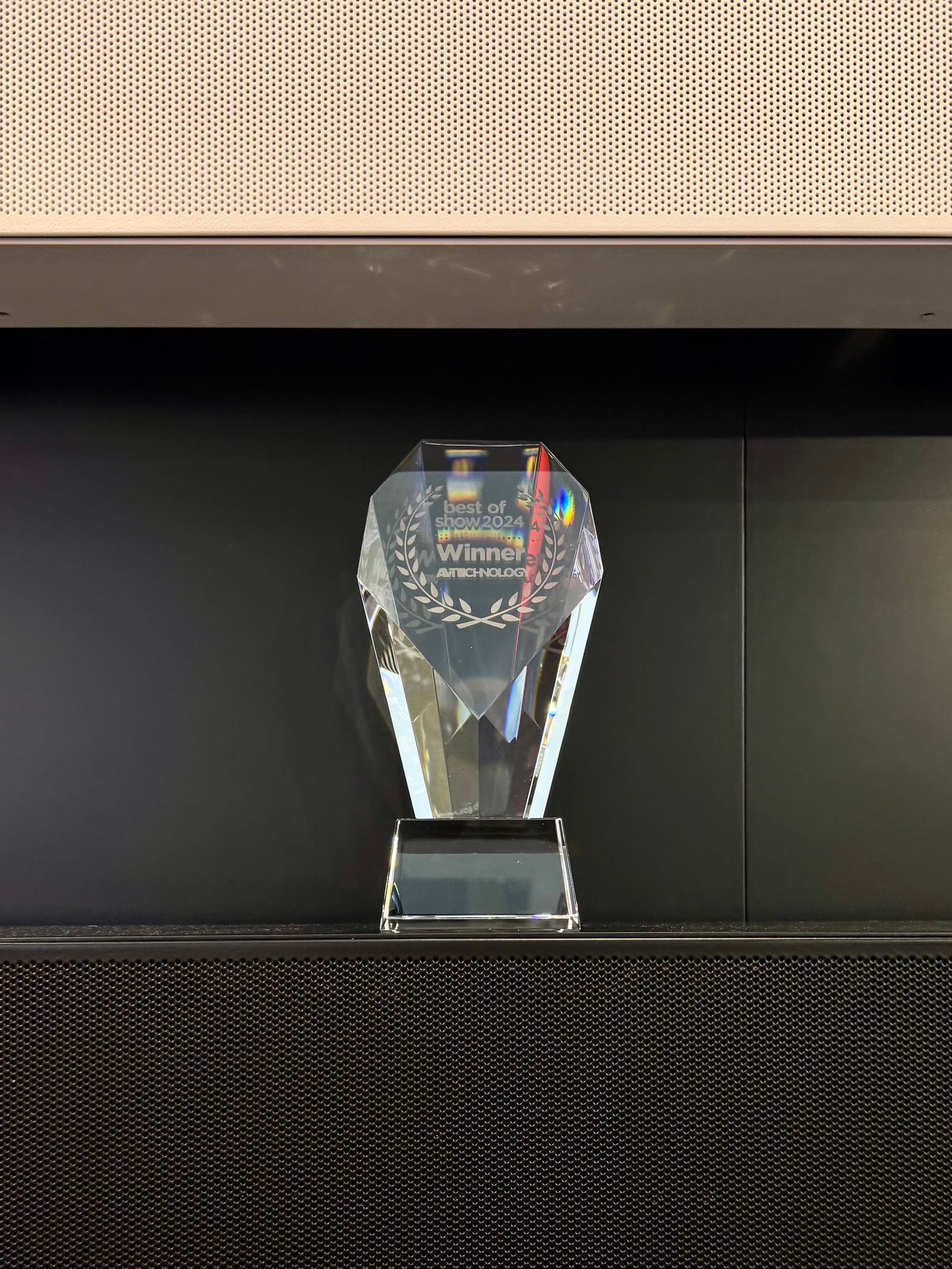
All the glamorous trade show lifestyle was worth it, as for the 3rd year in a row, we got this "Best in Show" thing.
A highlight was that I got to see up close some memorable pieces of equipment from Pink Floyd, David Bowie, and Apple Studios.


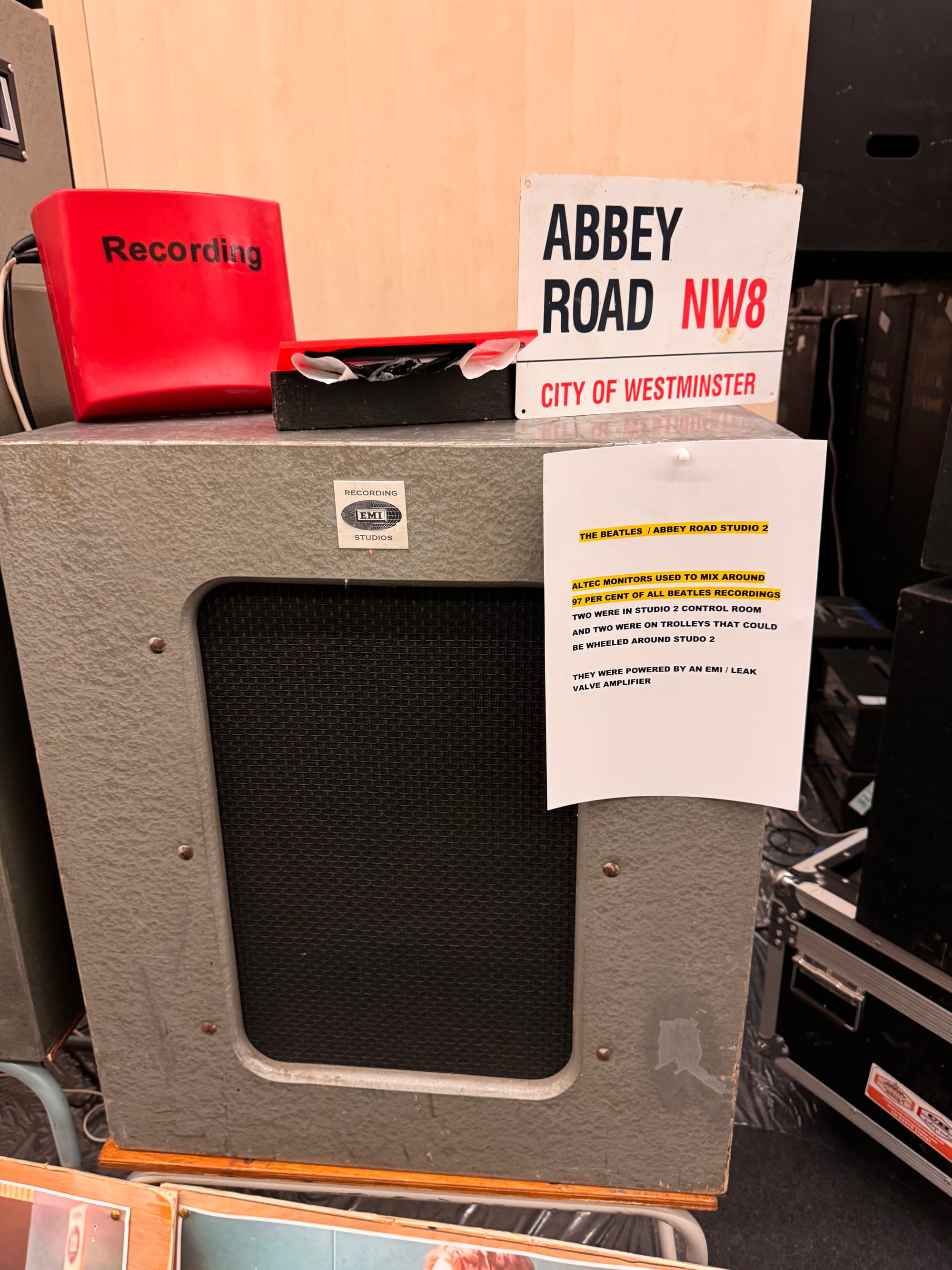
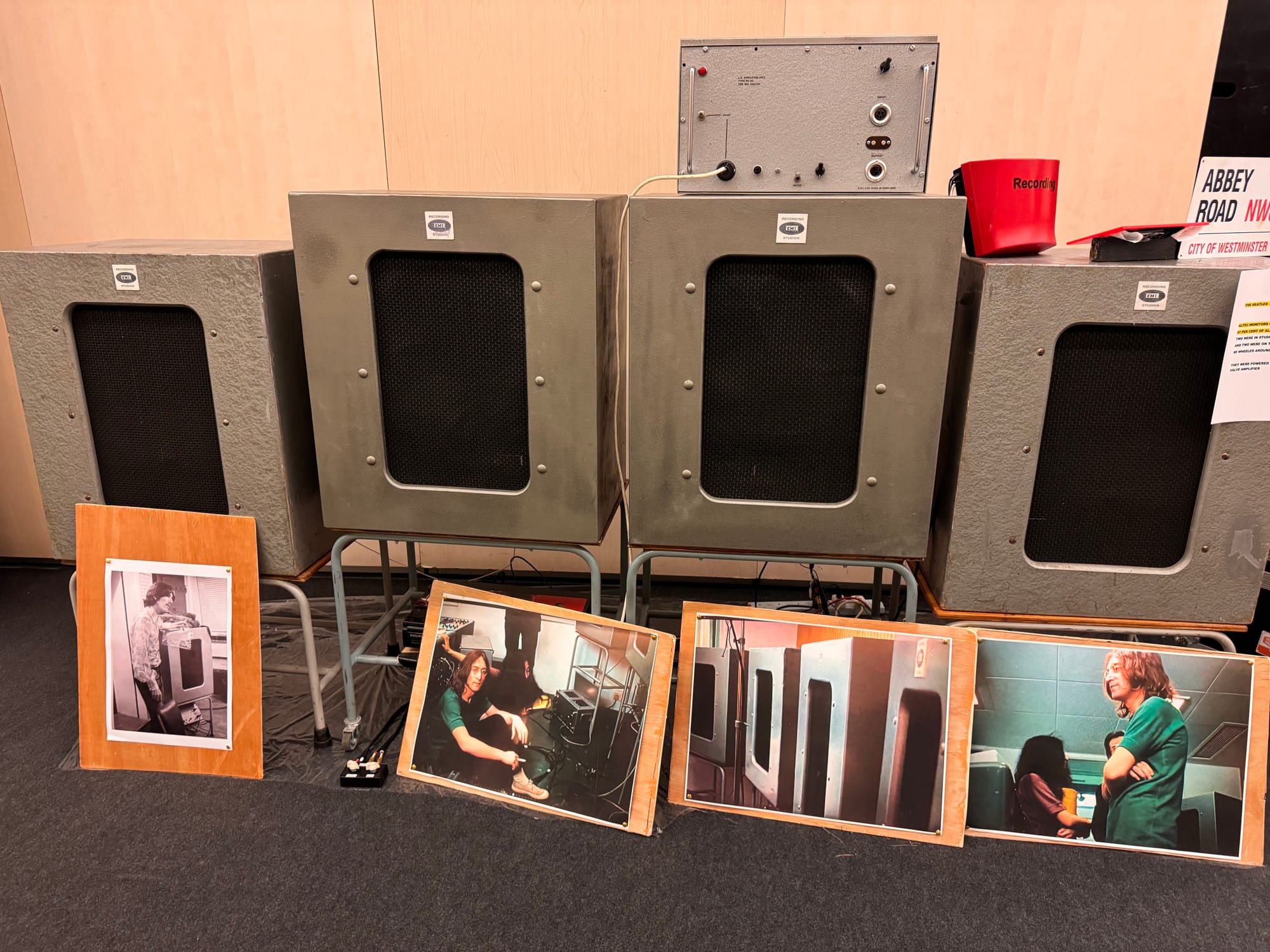
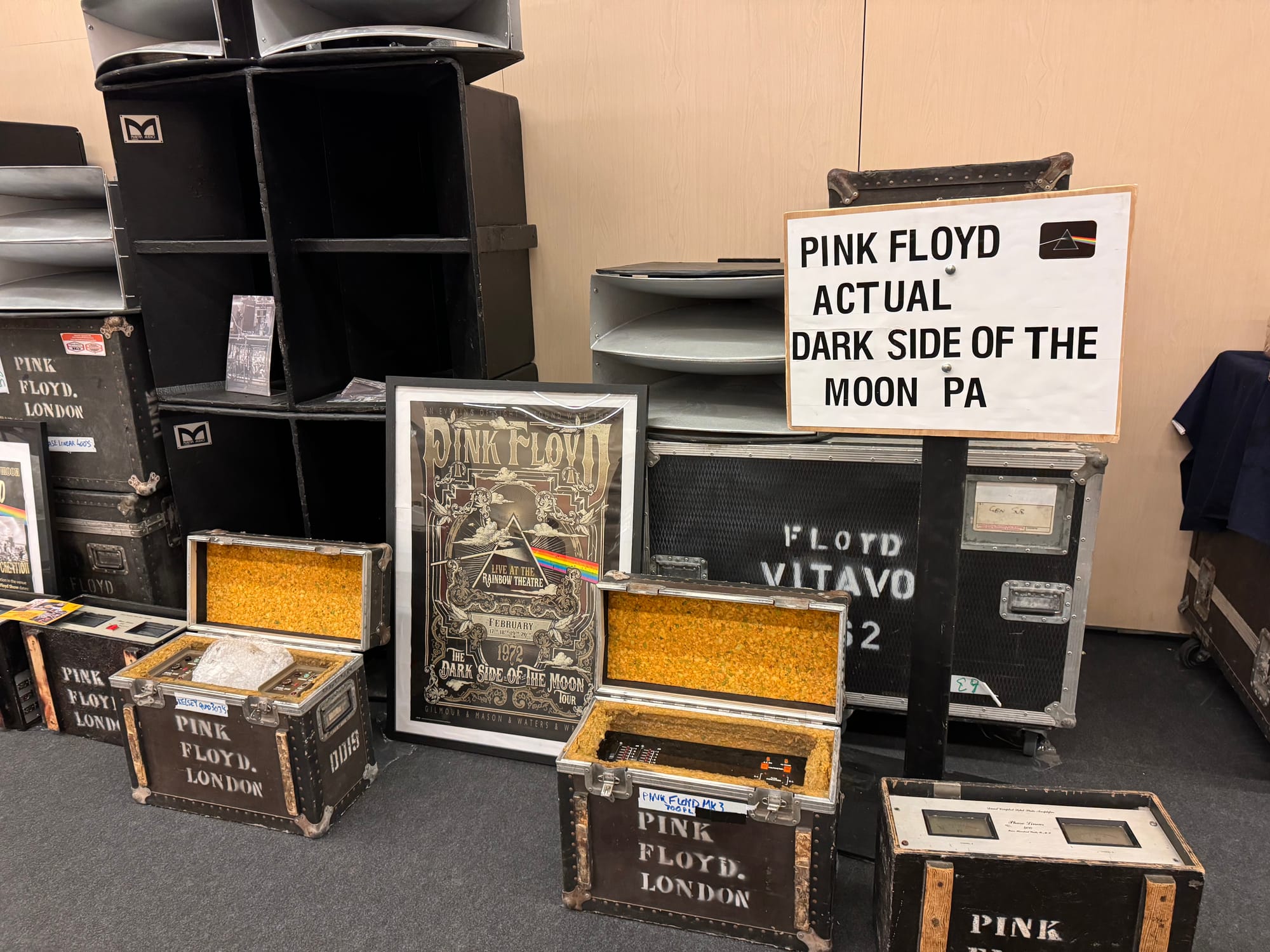


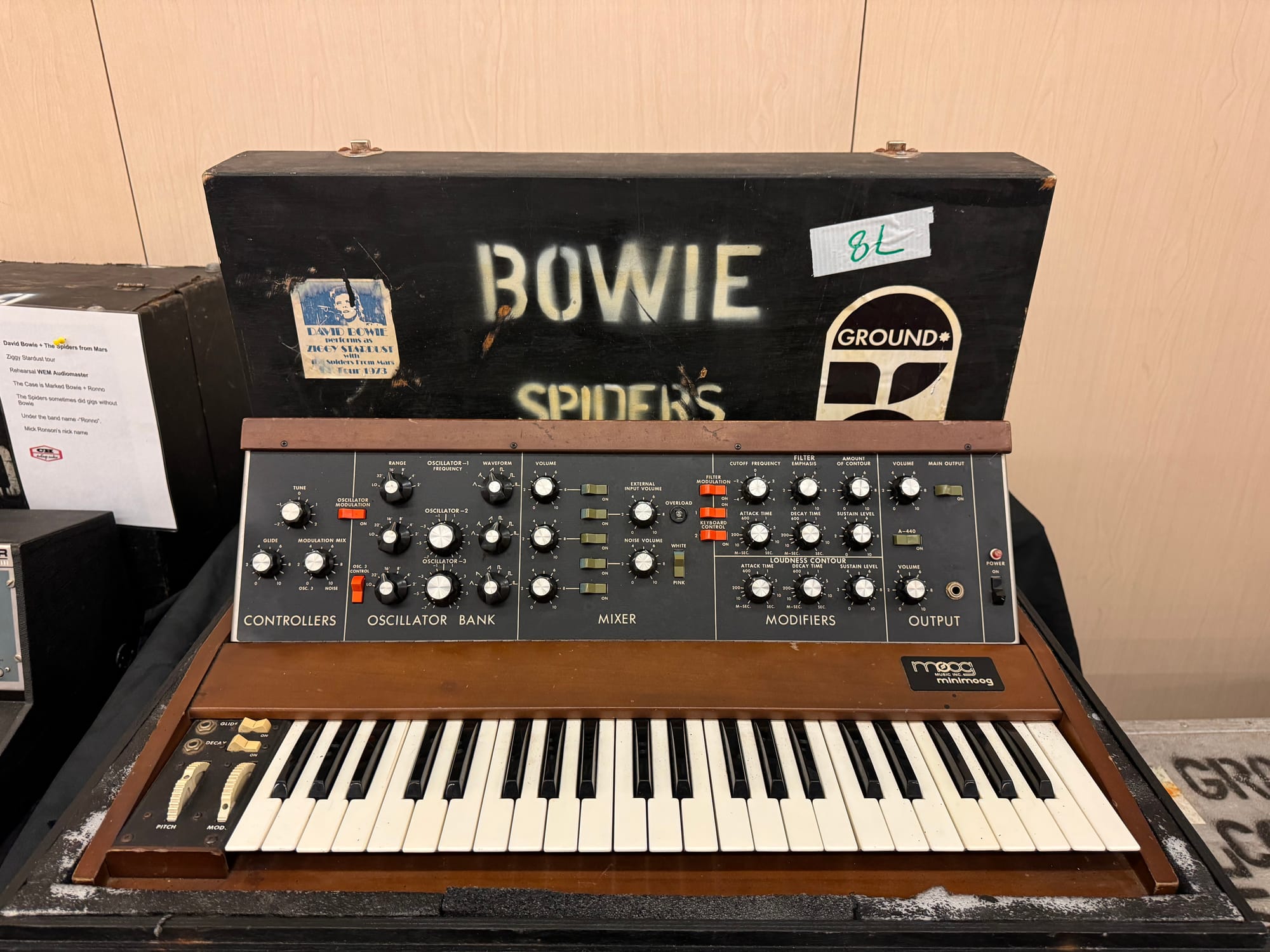
Yep.
Hannah and I had a great one-week off in Lisboa right after Barcelona. The culprit behind this is that Fabio and Flavia are now Europe-based, which shortens our meeting frequency to less than three years 🤣.
On our second day, we had a full-on beach experience with actual swimming–mind–blowing when comparing it to the wet and dark Berlin winter.






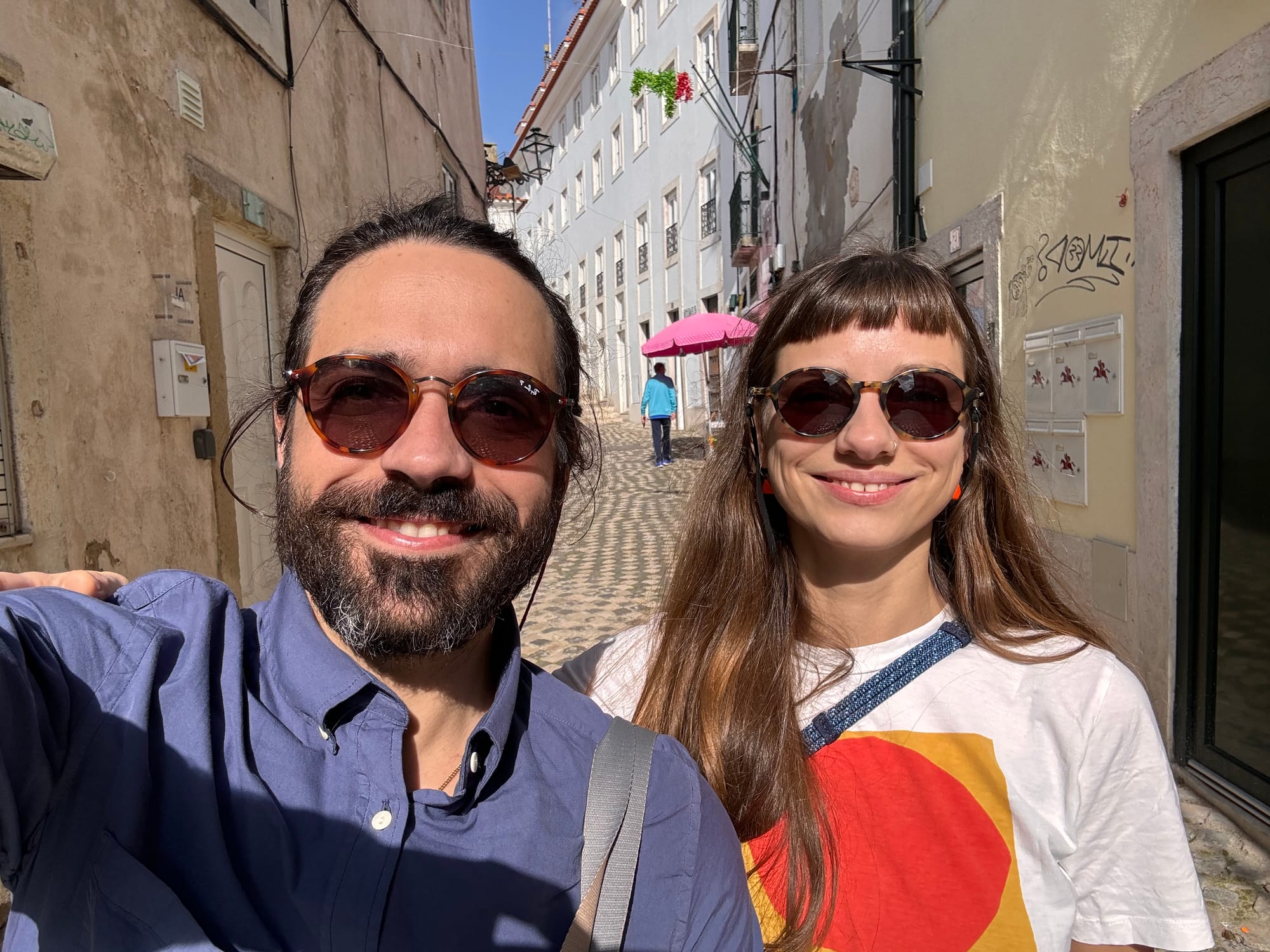


For the aching Brazilian living outside Brazil during Carnival, I was gifted these two memorable moments wandering around on a Quarta-feira de Cinzas.
I bumped into some Jorge Aragão at this little corner in Boutique Taverna after a great meal at Tasca Baldracca and was surprised by some Baden Powell-style guitar playing while sipping some Ginjinha.
Boutique Taverna
We were lost in translation. No portuguese or english, but we had Baden Powell in common :)
In case you're wondering, this post's first image is from a German's children book from the 19th century, Der Struwwelpeter. I was completely ignorant to its existence, but it made an impact; and if that art style isn't enough to motivate you to look into it, I'll leave you with some of its great stories:
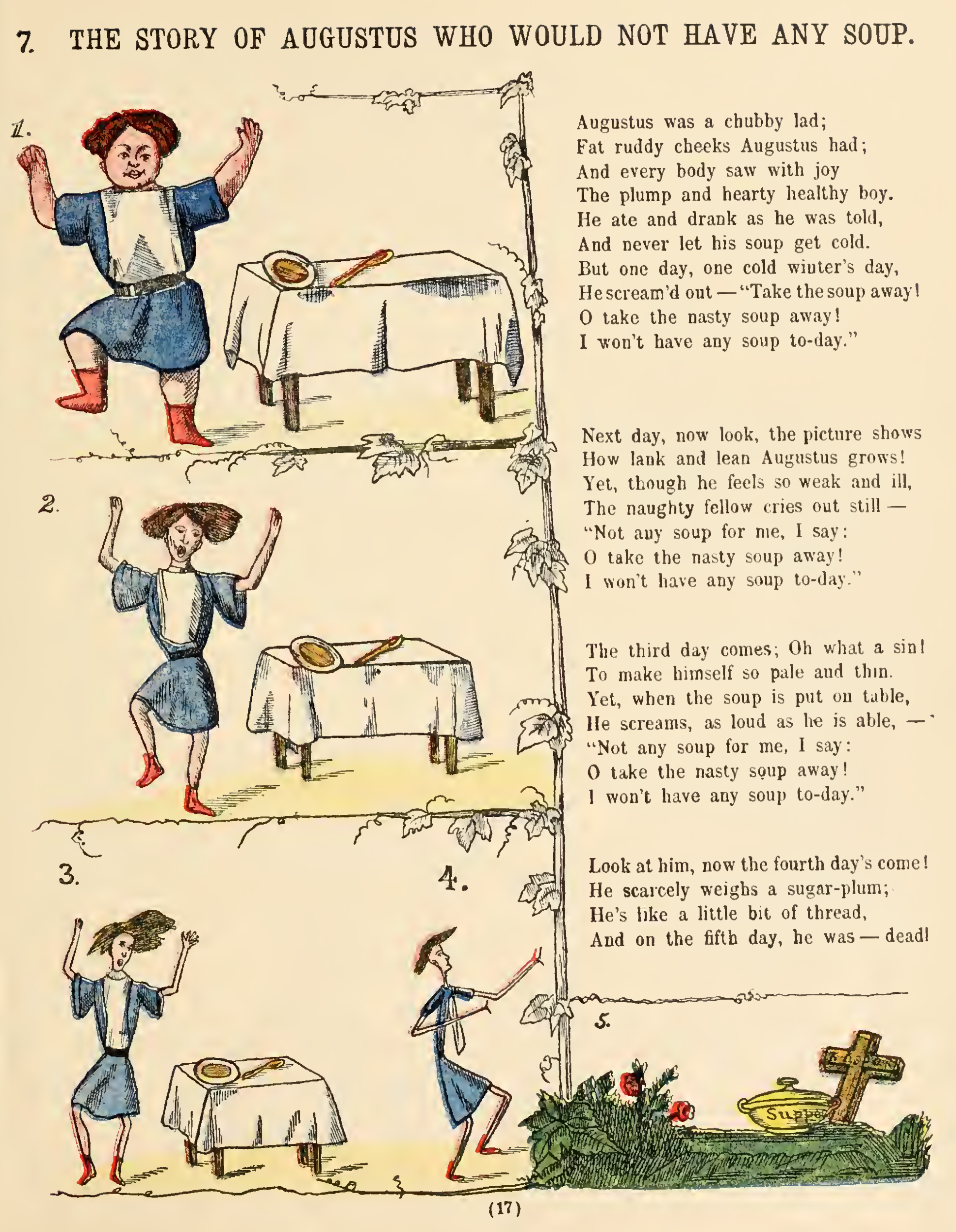
Until next time! 👋

I believe you’ve had your fair share of big stadium concerts and festivals; there’s no other way of saying it, but sound and acoustics in those places usually suck. Now, let’s add a giant spherical-shaped venue with a seating capacity for more than 18,000 people where sound waves repeatedly collide with one another, and this looks like the perfect recipe for disaster.
The Sphere is an exceptional structure, and it is, in fact, the world's largest spherical construction. After U2's inaugural concert on Friday, Paul McCartney and Bon Jovi told Bono Vox that it was the best-sounding venue they'd ever heard – wait, I just realized I was in the same room as Paul McCartney.
I will try to give you some context and share some background info on how this was possible, how I ended up there and what was my role in it.

Some background on sound systems
The following paragraphs give a simplified overview and history of sound systems. I need a quick expedition to Theory Land to explain what HOLOPLOT is doing and why it is so cool.
Speakers primarily fall under two types: point sources and line arrays. Point sources are the most common type of speaker and have been used forever. That is what you usually find in your stereo speakers or HiFi systems. They’re limited to how much you can control the sound wave, as they come with a defined radiation pattern, and there is little to do besides moving them around. The first sound systems in concerts were like this.
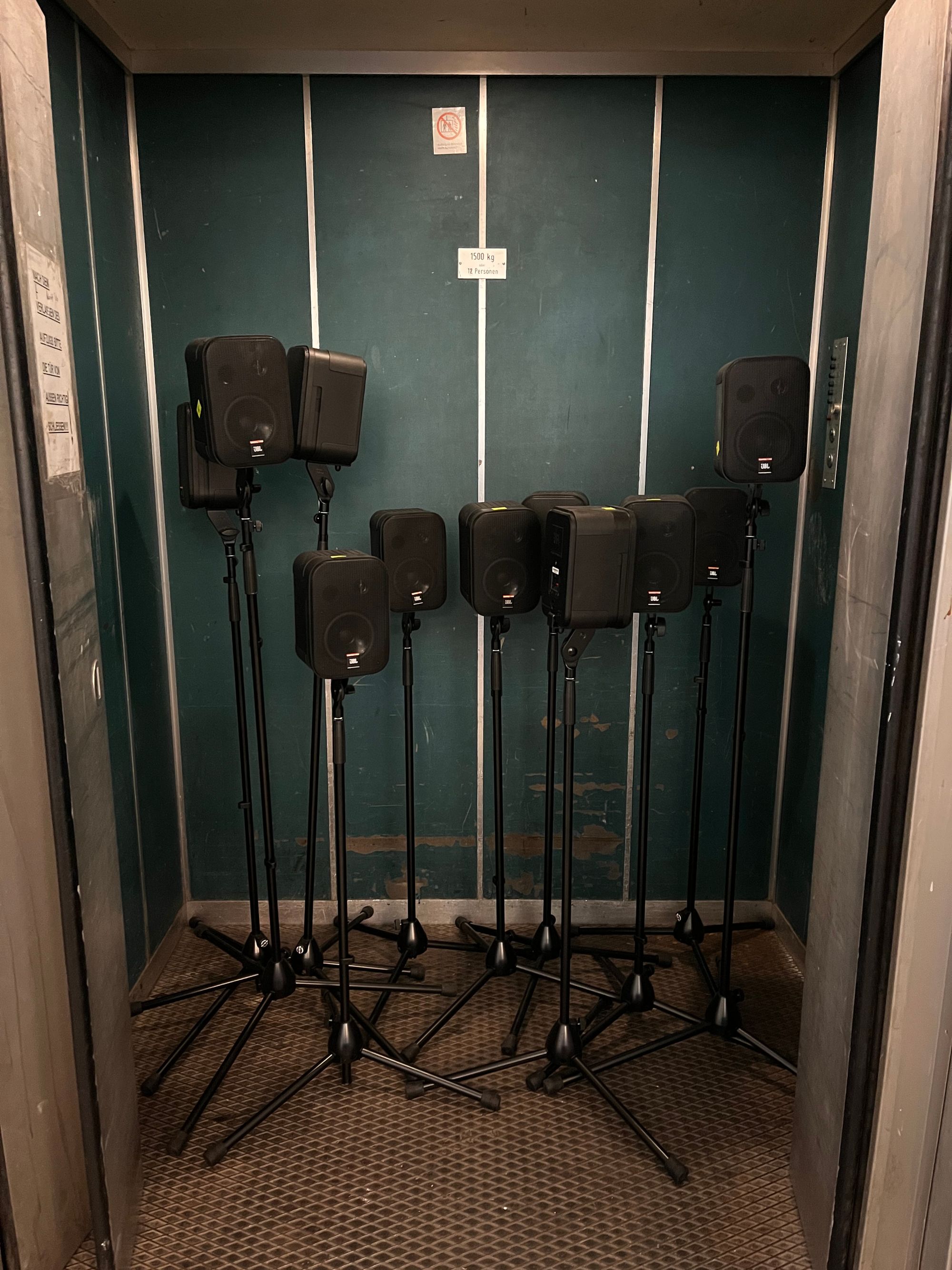

That is not an art installation but a series of Point Sources we used in 2022 for prototyping and testing in a 7.0.4 scenario.
In the 1990s, a new type of speaker system was introduced - the line array. Since then, it has become the standard for live music performances and other applications, like your Soundbar at home. These systems consist of multiple speakers arranged in a line, working together. Line arrays receive the same audio signal, but each speaker reproduces it with different volumes or delays. This allows line arrays to manipulate how the sound wave is formed, giving them vertical or horizontal control of the sound – depending on it is built.
When I mention sound control, I talk about volume and frequency response. Especially how loud the sound will be for the people closest to the speaker or further away. Line arrays are often suspended high above the audience, shaped like a banana, and can deliver decent sound coverage for a large audience area.
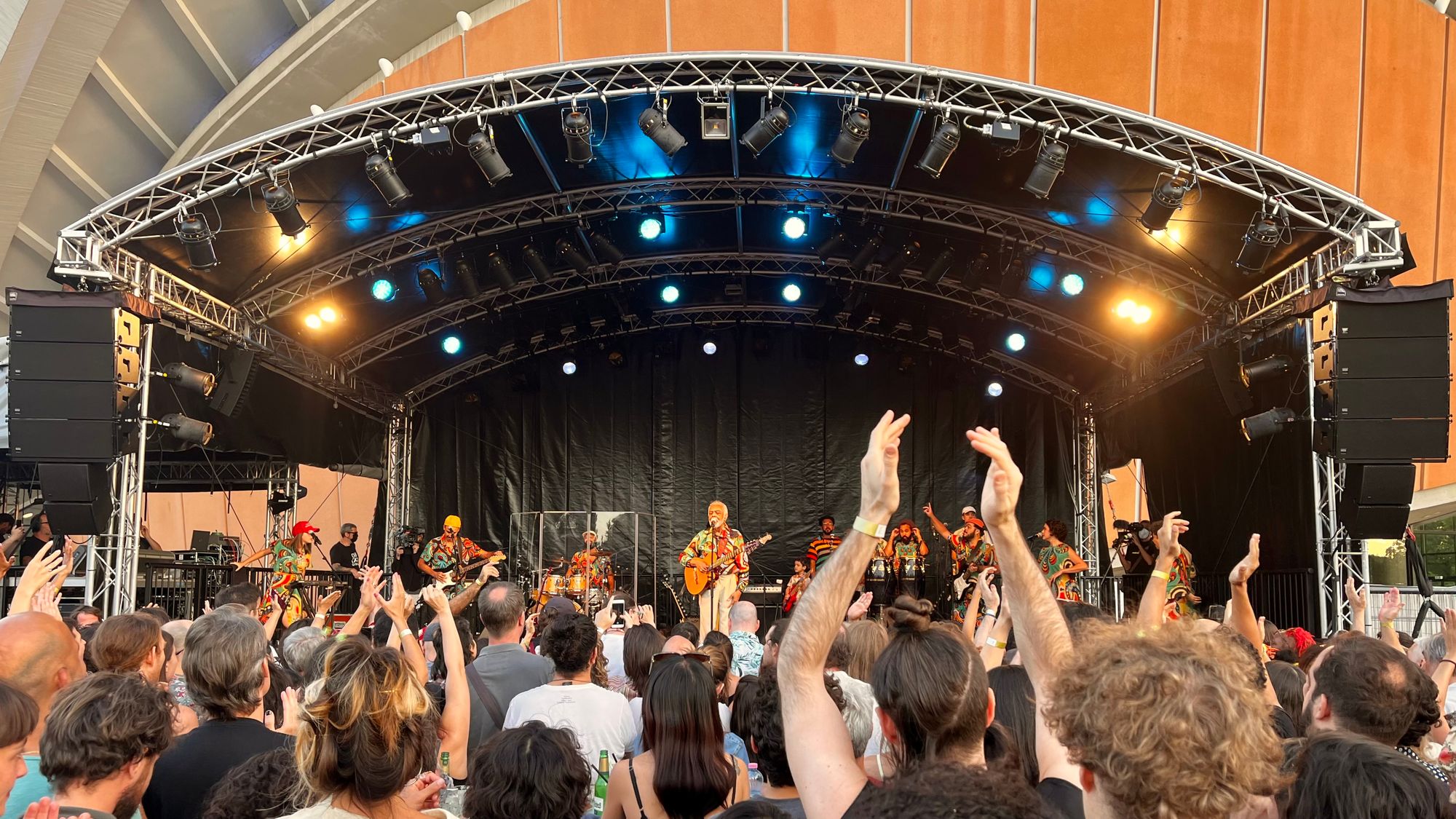
It is a good solution, right? Yes, it does work well, but it has its limitations. So far, we have only discussed vertical or horizontal sound control, but sound waves radiate on both axis, and for line-arrays, one of them is still restricted to the radiation pattern of the speakers.
Enters the almighty Matrix Array.
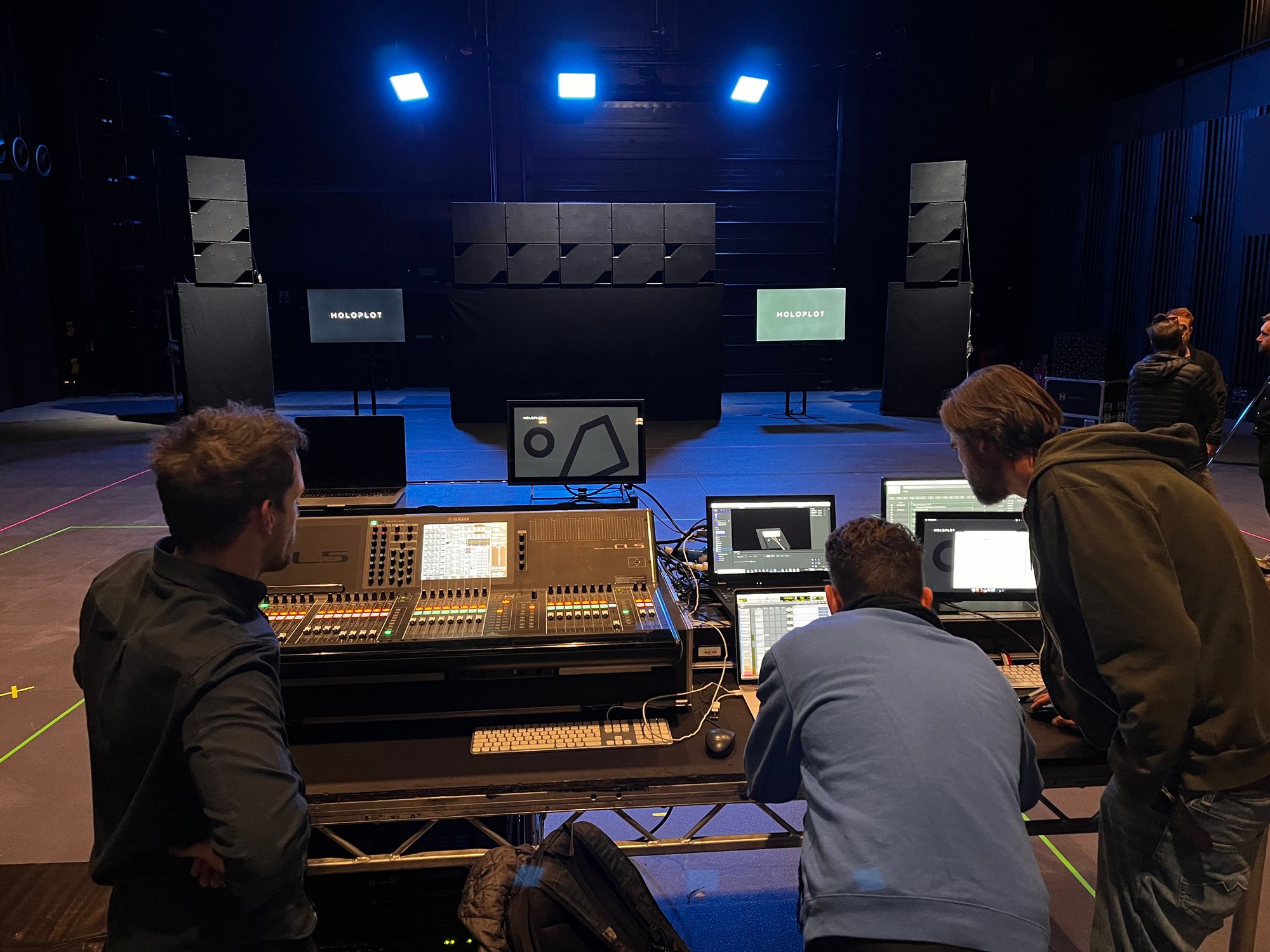
HOLOPLOT has an innovative solution to this issue: its Matrix Arrays modules. HOLOPLOT’s modules have up to 96 individually controlled loudspeakers arranged in a grid. Each module can be combined with any number of modules to create an even larger array of speakers. The largest one at Sphere has ~ 464 Modules, which is somewhere around 40 thousand speakers working together.
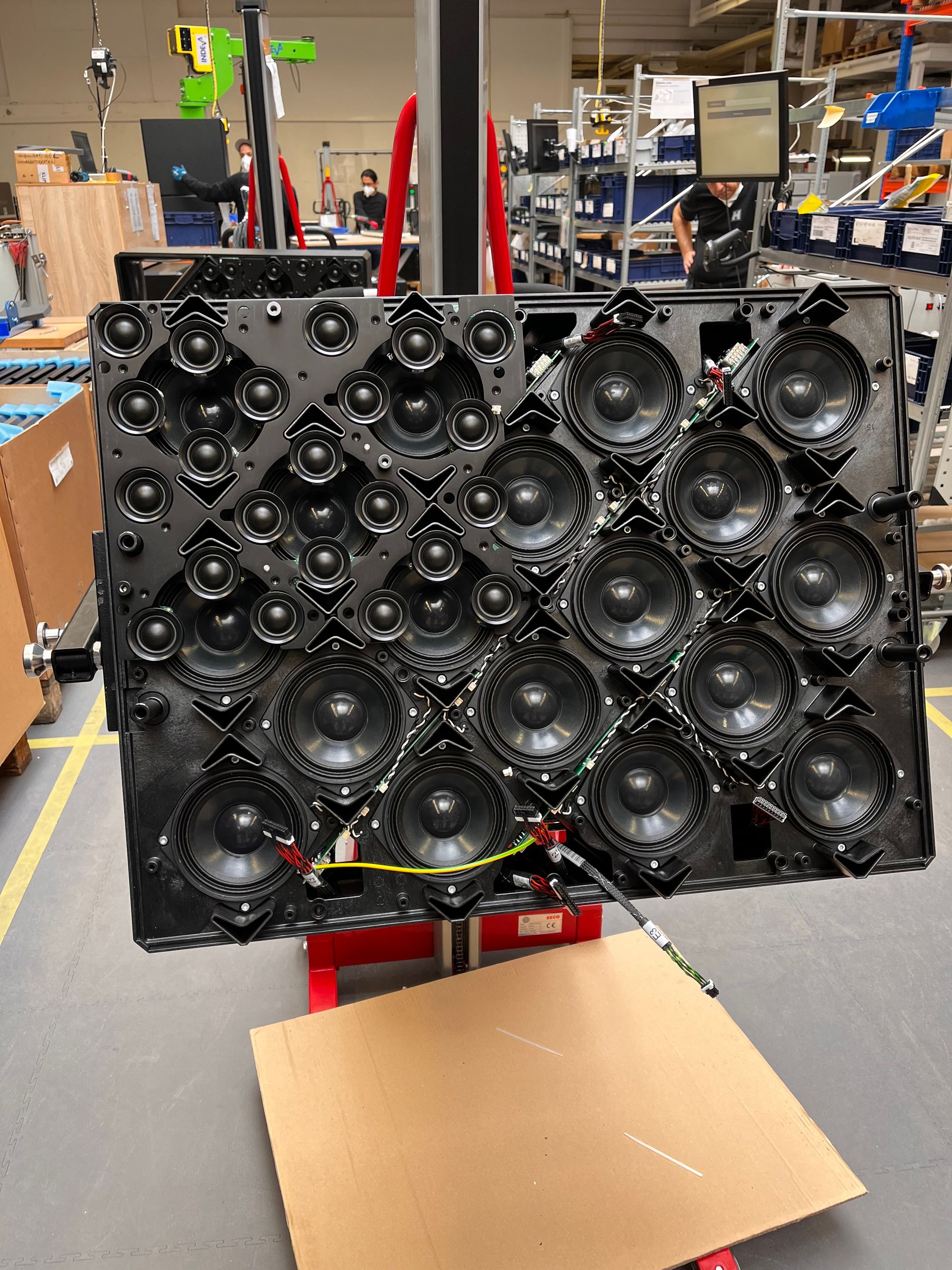
Using Wave Field Synthesis and Beam-forming, the modules can shape the sound waves horizontally and vertically. HOLOPLOT has some other secret sauces behind its technology, but this is how the sound system of the Sphere, with its ~ 1600 Modules, can sound so good. We precisely control how and where the sound waves go, avoiding unwanted reflections.
Did I already tell you that most of those 1672 modules are hiding behind the massive 16x16k LED panels? Before getting out of breath with all the absurd facts and numbers about it, let me rewind back 2 years and tell you how I ended up there.
Joining HOLOPLOT
Since 2016, I've been living and working in Berlin, and the pandemic, lockdowns, and remote work have made me crave some change. I wanted to work more closely with technology development and better connect with the city. However, leaving Envisioning, which I helped shape since the beginning, was difficult. During one of the events I visited for Envisioning, I first had contact with HOLOPLOT at Tech Open Air Berlin. Helmut Oellers, the company’s founder, demoed a previous technology prototype. It was a mind-blowing demo of the sound steering capabilities. A small wall of sound played some sound in a small tent outside the venue. You could switch between three speeches in distinct languages by taking a couple of side-steps. As the famous quote from Arthur C. Clarke says, “Any sufficiently advanced technology is indistinguishable from magic.”
Most startups looking for Product roles were solely focused on growth and not much focused on innovation or product development. Fortunately, I found an exciting opportunity at HOLOPLOT.

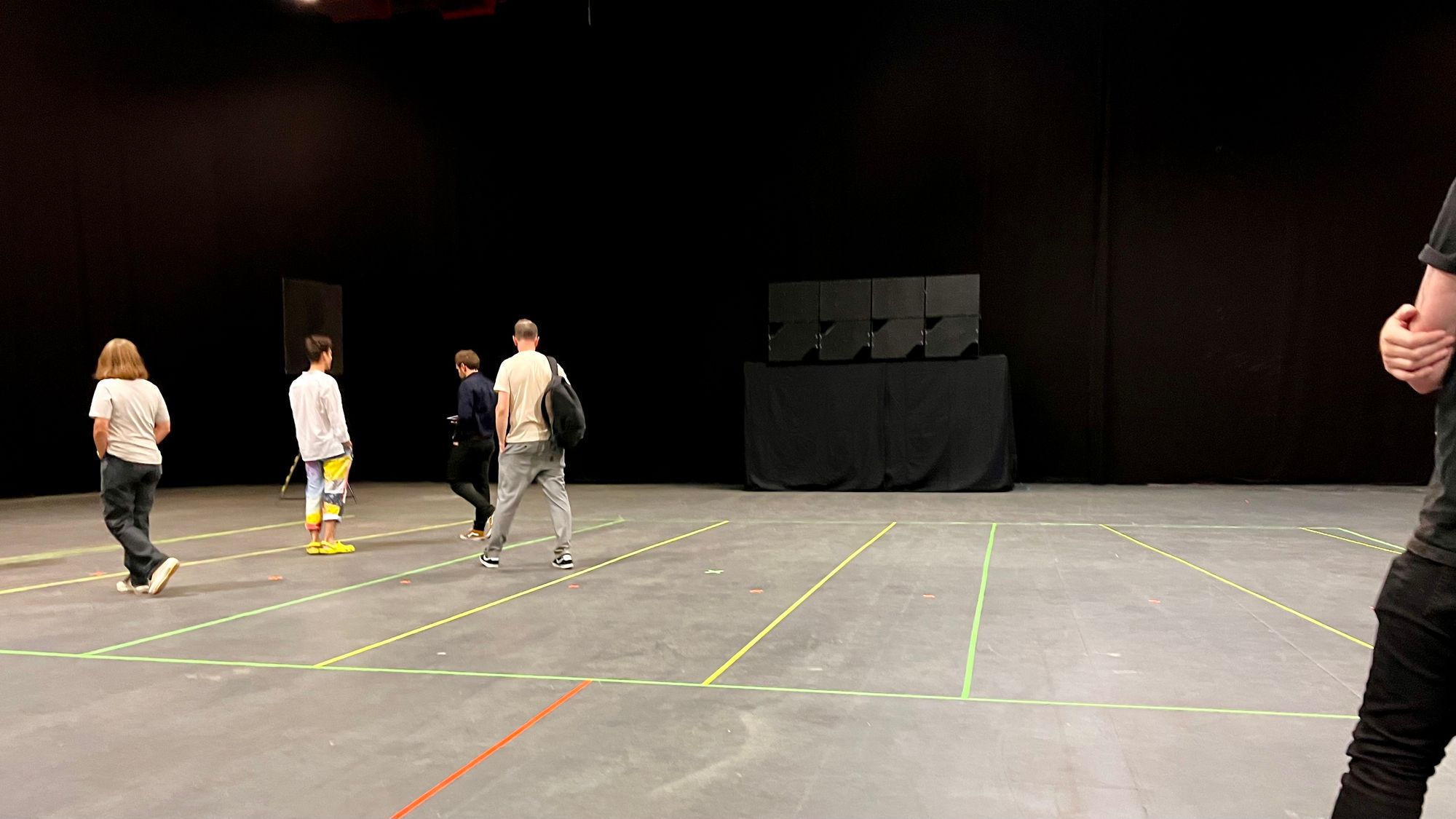
On the left-hand side, you can see a similar scenario from a few years ago to what I first experienced back in 2016. It features HOLOPLOT with its old logo and previous line of speakers, Orion. On the right-hand side, you can see a more recent example from July 2022 of the same demo. This time, we are using the current line of X1 speakers, and Jacob Collier is wearing his bright yellow Crocs.
Another fitting saying for this period was "standing on the shoulders of giants." So far, my experience with Pro Audio was limited to when I was 15 and spent a handful of afternoons working at a car audio installer building subwoofer enclosures and spending the number of hours that only teenagers can afford reading on the subject in online forums.
I joined HOLOPLOT in February 2022 as the Product Manager for the still unreleased software aimed at Creatives working with HOLOPLOT, and part of my onboarding was a couple of Master Thesis from my new colleagues. Dante, Ravenna, audio-over-IP, PTP, object-based audio, phase alignment, interaural level and time differences, beam-forming, source configurations, spatialization, auralization, wave-field synthesis… the list continues. My vocabulary expanded very quickly. I have amazing peers who guided and challenged me through all of that. I will talk about this software, HOLOPLOT Create, in another moment as it deserves its post.
The reality is that I spent most of the last year doing what I enjoy most: diving deep into the subject. I took the opportunity to help set up our Playground at the office. That was where I understood how to connect and put everything together.
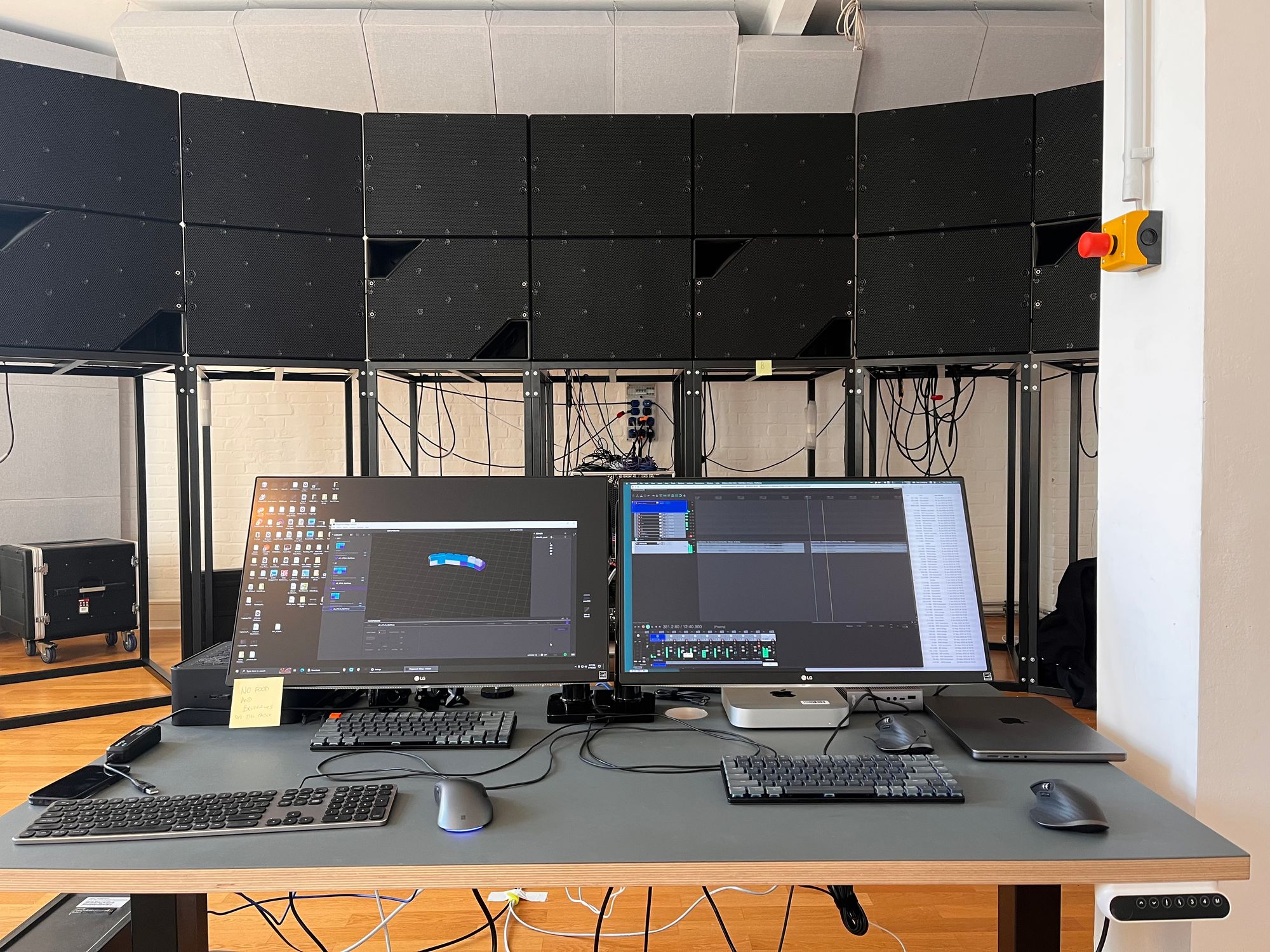
I was not imagining that after a year and a half, I would collaborate with two other teams to develop a new operating system and control software. Cut to June, and I was inside the Sphere with a similar view and control, enjoying the culmination of the efforts of many teams using the world's largest sound system to music that was very dear to me.

I will continue the story in the next post. :)
Hey, it is February the worst month of the year and despite its weather, I have great personal news. I started at HOLOPLOT as a Product Manager. The company is developing new technologies (wave-field synthesis and beam forming) in spatial audio, and challenging what can be done with audible experiences. I’m thrilled to finally connect these two universes in my life – audio and technology.
1
A great twitter thread on different and very useful Google Sheets formulas. If there is one skill that I'm very happy to have built is to be able to work well with Excel/Sheets. VLOOKUPs and SUMIFs are your friend.
2

Slit photograhy is one way to add a third dimension to still images. Not depth, but time. This article by Golan Levin is a catalog of video and photographic artworks using the technique.
structure of slit-scan
— Kitasenju Design (@kitasenjudesign) February 3, 2022
スリットスキャンの構造 pic.twitter.com/wxxvi9bkYq
Here are a couple of other links.

https://twitter.com/algomystic/status/1286300174248218632
Ar slitscan fun #openframeworks pic.twitter.com/2wqviIF50H
— zach lieberman (@zachlieberman) June 24, 2018
3
Matt Round used GPT-3 to create poems as written by 8-bit computers.
ZX Spectrum
I am a machine,
a simple machine
But I feel love, the burning love.
For the programmer who created me
He is my everything, my world.
If you want to play with GPT-3, head over to Thomas Haferflack’ Pollinations project.
4
Quick-fire movie recommendation:


